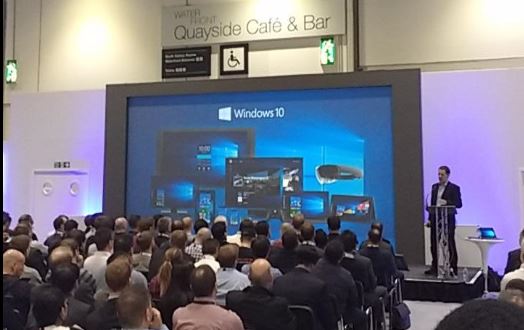
IP Expo brings together the global best, brightest and most innovative in the internet and IT worlds, so it’s not surprising that there are some fresh perspectives coming out of it. CBR spoke to some of the exhibitors about what they are worried and excited about.
1. Tech and internet industries were ‘complacent’ about privacy
Jimmy Wales, founder of Wikipedia, said:
"I think now, finally we are [doing enough] about it. I would include myself in my criticism. We knew for many many years that Wikipedia for example was easy to spy on; we were a little bit complacent about it and consumers were complacent about it.
"On Wikipedia for example there are no private spaces. Everything you do on Wikipedia is public. You can edit an article. I’ve always felt editing Wikipedia is a public thing and if you’re reading that’s more or less private. We didn’t really operationalise that and we probably should have.
"I’m not singling myself out for special criticism, but I’m not immune; we as an industry were complacent about it. Now I am happy with our progress on it."
2. Watch your DNS
Malcolm Murphy, Systems Engineering Manager at Infoblox, said:
"DNS takes a domain name that you and I type into our web browser or email and turns it into an IP address that computers use, so it’s that mapping of names to numbers. If DNS doesn’t work, then all of your investment in applications and networks is wasted.
"Fred types something into his laptop; his computer goes to a DNS server inside the organisation to get the IP address. That DNS server, if it hasn’t remembered the answer, has to go out to the internet to get the answer.
"None of the security perimeter technology, such as the firewall, has looked at the transaction. It’s seen that it looks like it’s coming from the DNS server. I’ve got an uninspected two-way communication channel ; the bad guys know this. Malware typically now is written to tunnel data through looking like DNS traffic."
3. Securing the application should be done in the back-end
Paul Dignan, Field Systems Engineer, F5 Networks, said:
"Malware is becoming pervasive and the traditional solutions for dealing with it are not working. You need a solution that can tie in without the need to put anything on the end user’s device, because most devices are outside corporate control, as in BYOD scenarios.
"If we can inject something into our applications so that when they send information to the client we can recognise that in the application, then we can start to fight it.
"Developers are not security specialists, so they are not the right people to be thinking about doing this. What you need is something that’s going to be in your data centre in flow so that when application traffic comes through it can apply those controls on the fly.
"That way, you don’t need to modify the application, you can modify the traffic and you can apply controls across all of your applications."
4. Forget mobile apps
Matt Calkins, CEO of Appian, said:
"We don’t believe in a ‘there’s an app for that’ mentality. We think all of your applications should bring you to one central location where you can view all the data, where you can view all the activity and collaborate with all the users at the same time.
"As a civilisation we should stop thinking about mobile apps because they are dead end. A mobile app is a splintered and isolated thing.
"Instead we should think about a mobile enterprise where all of your digital assets – your data, tasks and users, are all available from every device simultaneously. You should be able to just expect to bring your enterprise with you when you carry your mobile device with you.
"Nobody is thinking about that right now. They are all thinking about one, specialised app.
5. Building network resilience is an alternative to over-provisioning capacity
Peter Hannah, Regional Director of UK and Ireland at NETGEAR, said:
"From a wireless perspective, it’s difficult not to over-provision for organisations, because you have to provide access wherever people are.
"From a network infrastructure perspective, it’s more about providing resilience so that if you have a fault in the network you have the infrastructure there that will cope with the issue or will re-route without any loss of supply to your users.
"You don’t need racks and racks of equipment, you just need the right equipment configured in the right way to provide you with that level of resilience.
"Over-provisioning will probably mean more cost, and you don’t want to overburden an SME with too much cost."






